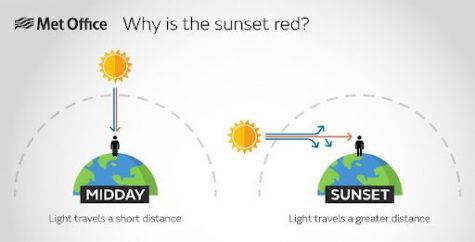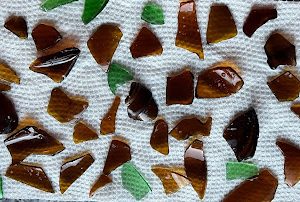Why is the Sky Blue?

A blue sky caused by Rayleigh scattering.
Why is the sky blue?

Contrary to popular belief, the sky does not reflect the blue of the ocean. Instead, it involves the wavelengths of different colors. Light travels in waves, and some colors have longer wavelengths than others. Notably, red has the longest wavelength, and blue has a much shorter wavelength. White light, like the light from the sun, contains all of these wavelengths. These waves of light travel in straight lines until they bump into something, like gas molecules in the atmosphere.
When the waves of light bump into the gas molecules, the blue waves are scattered more than the other colors because their wavelengths are shorter and choppier. This scattering, which is more effective with shorter wavelengths, like blue’s, is called Rayleigh scattering. The blue light is then radiated and is visible from all directions, making the sky look blue. Even though violet light also has a short wavelength, we cannot see violet well, which is why the sky does not look purple to us.
So then why are sunsets red?

At sunset, the sun is lower in the sky, so its light has to travel farther through the Earth’s atmosphere than it does at midday. The blue light, which gets scattered more due to Rayleigh scattering, gets deflected away before it reaches us. Then, once the blue light is scattered away, there is relatively more yellow and red light for us to see. This red and yellow light is what we see when looking at a sunset.
by Hana Shinzawa ’24, Science Editor
24hshinzawa@montroseschool.org














